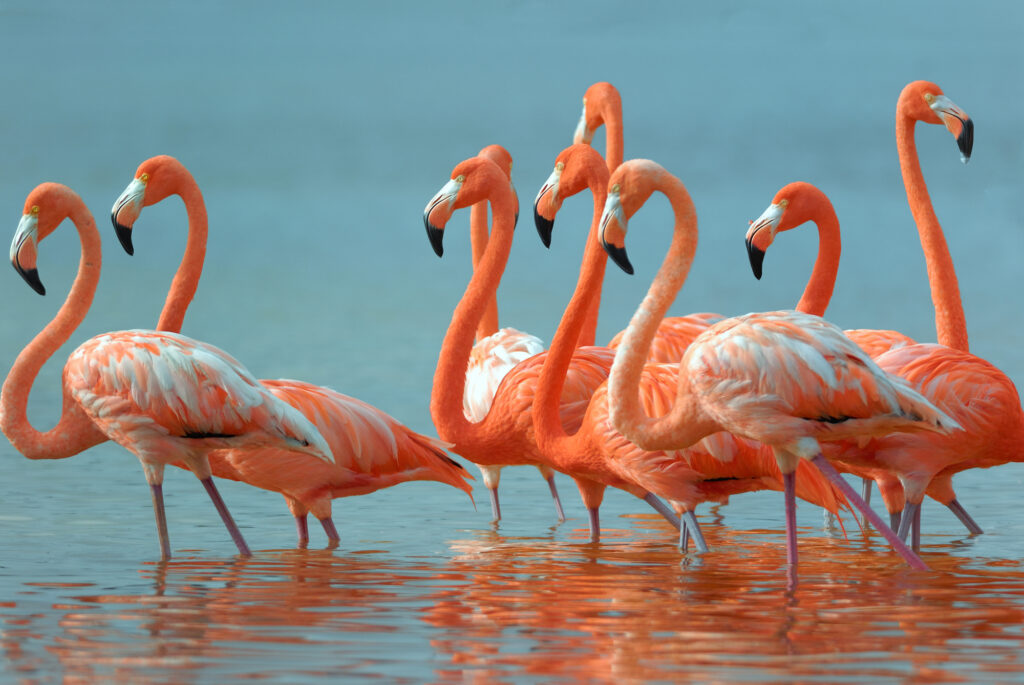If you’ve ever seen a flamingo, you know that they’re pretty unmistakable. Those long legs, webbed feet, characteristic down-curved bills, and of course, that pink plumage make them one of the most recognizable birds in the world.
But did you know that there are actually quite a few birds out there that look like flamingos? In this blog post, we’ll take a look at ten of them,
10 Birds That Look Like Flamingos
Great Egret
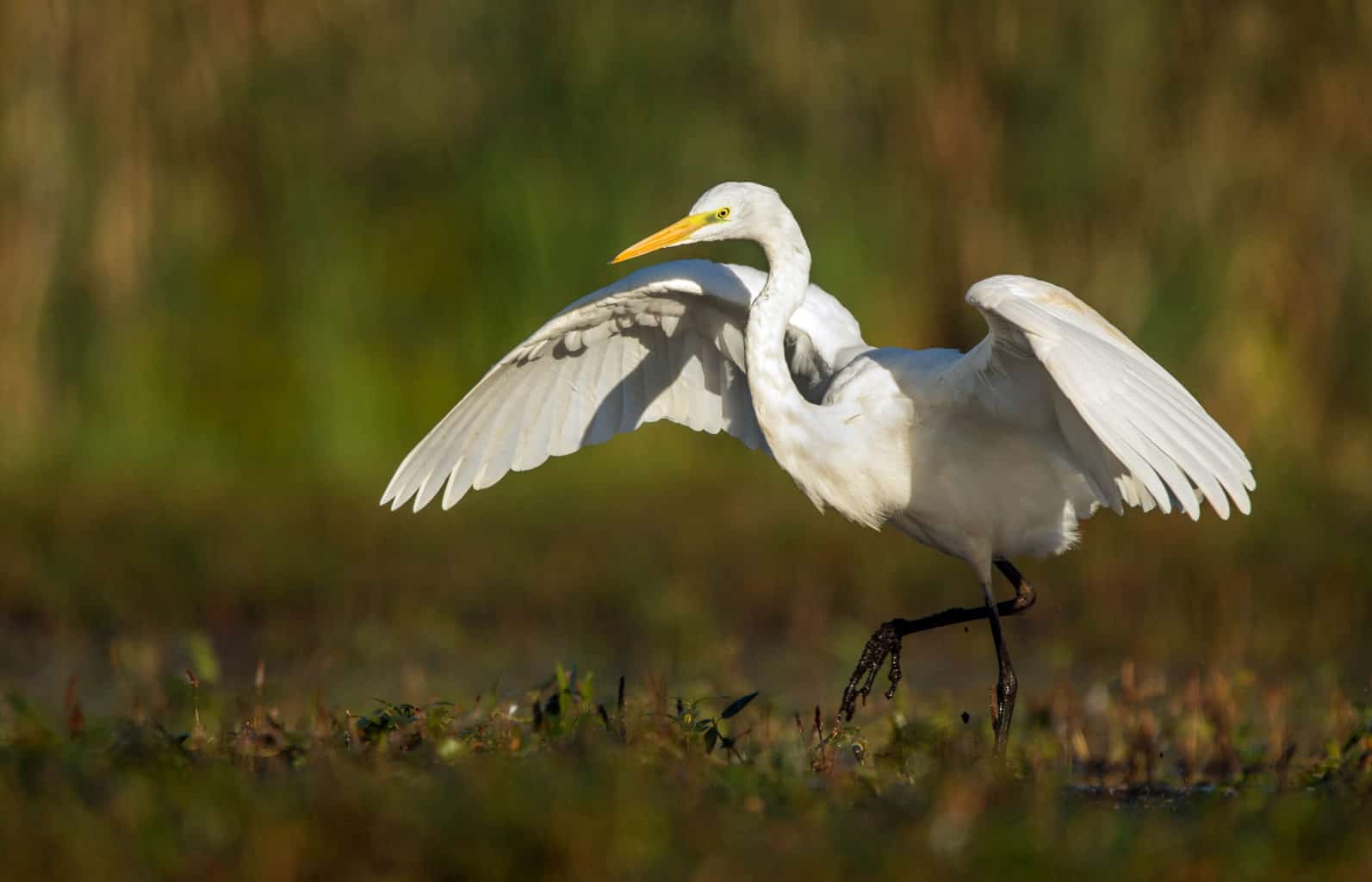
The great egret is a beautiful bird with a long neck and striking white plumage. Commonly found near bodies of water, these birds use their long beaks to spear fish and other small prey.
Great egrets are often mistaken for flamingos due to their similar coloring, but the two species have several key differences. For one, flamingos are much larger birds, with an average wingspan of five feet compared to the egret’s three-and-a-half feet.
Additionally, flamingos tend to have downturned bills, while great egrets have flat bills. This allows them to swim in deeper water.
Finally, flamingos are typically found in warmer climates, while egrets are more widespread and can also be found in temperate regions.
Despite their differences, these two birds share a common beauty that is sure to captivate any bird lover. These water creatures have thicker necks and broad wings.
Roseate Spoonbill
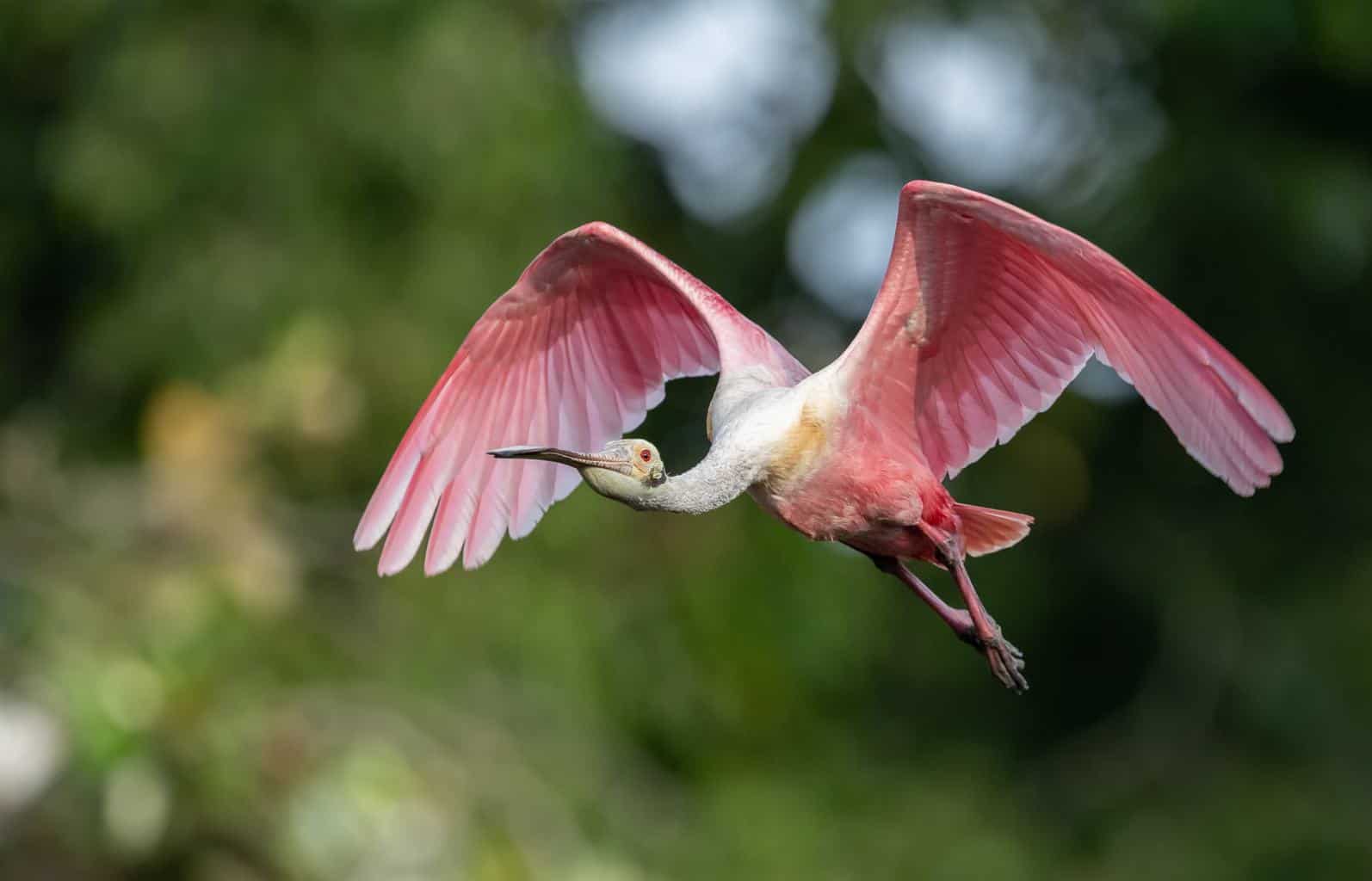
The flamingo may be the most well-known bird in the world, but another pink bird is just as interesting: the roseate spoonbill. They mostly live in shallow lakes, especially in central America.
These beautiful birds are found in marshes and wetlands worldwide and get their pink plumage color from their food. Spoonbills are unique because they have a spoon-shaped bill to filter food from the water.
Their diet consists mostly of crustaceans, but they will also eat small fish and amphibians. When feeding, spoonbills will often work together in large groups, using their bills to sweep through the water and trap prey.
Thanks to their unique appearance and feeding habits, roseate spoonbills are a fascinating addition to any wetland ecosystem. Their curved beaks are among the noticeable differences between them and other flamingos.
The young ones have a hairless heads with pink coloration. They resemble flamingos in size. These physical differences identify them from other flamingos.
Sandhill Crane
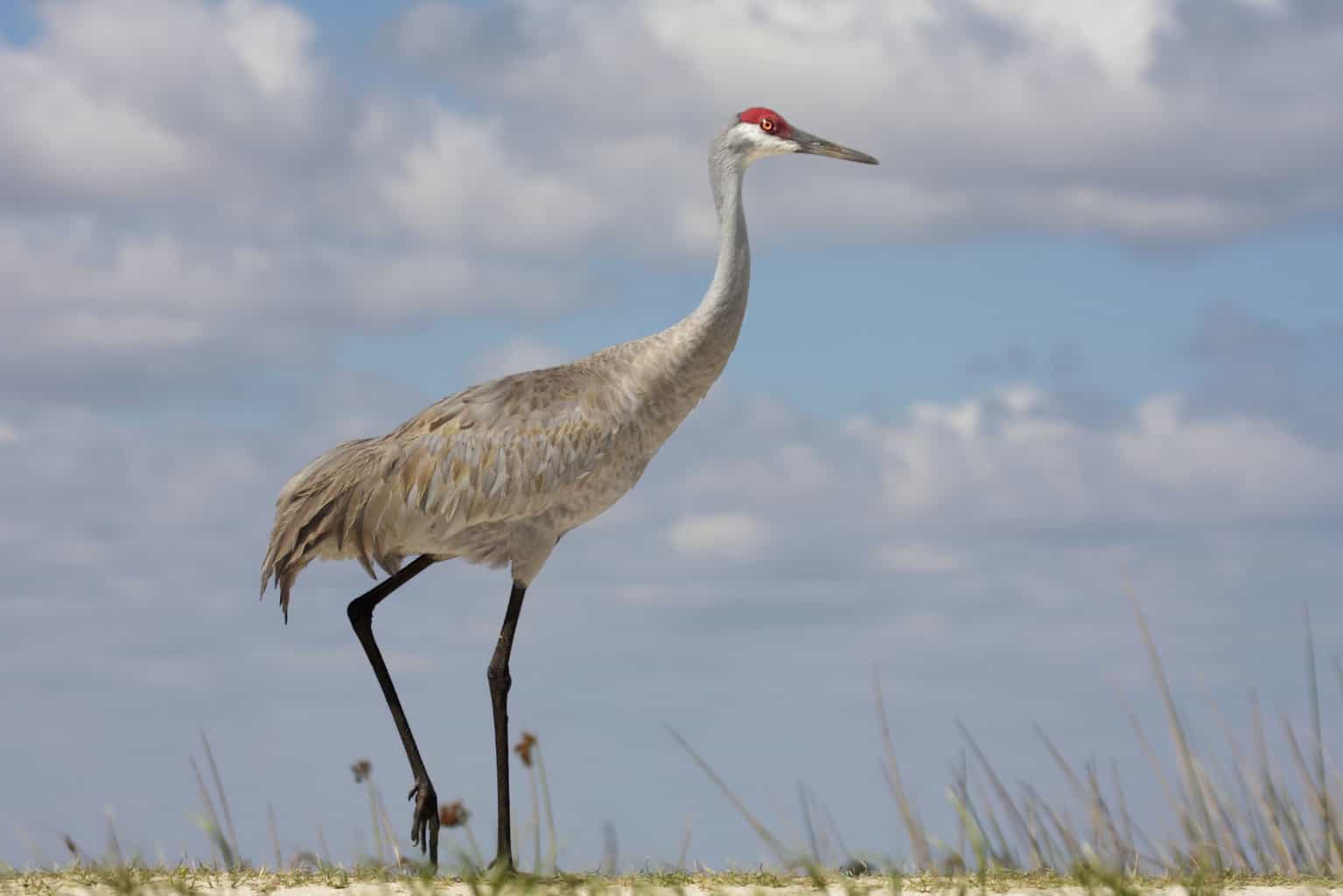
At first glance, sandhill cranes and flamingos may seem like two very different birds. However, there are actually several similarities between the two species. Both sandhill cranes and flamingos are long-legged birds with long necks.
They also both have curved bills and eat a diet of mainly insects and crustaceans. In terms of appearance, the most distinguishing feature of a sandhill crane is its gray plumage.
On the other hand, flamingos are usually pink or orange due to the carotenoids in their diet.
However, it is worth noting that not all sandhill cranes are gray, and not all flamingos are pink; there is considerable variation in both species.
So, the next time you see a long-legged bird with a long neck and a downturned bill, take a closer look to see if it’s a sandhill crane or a flamingo.
Painted Stork
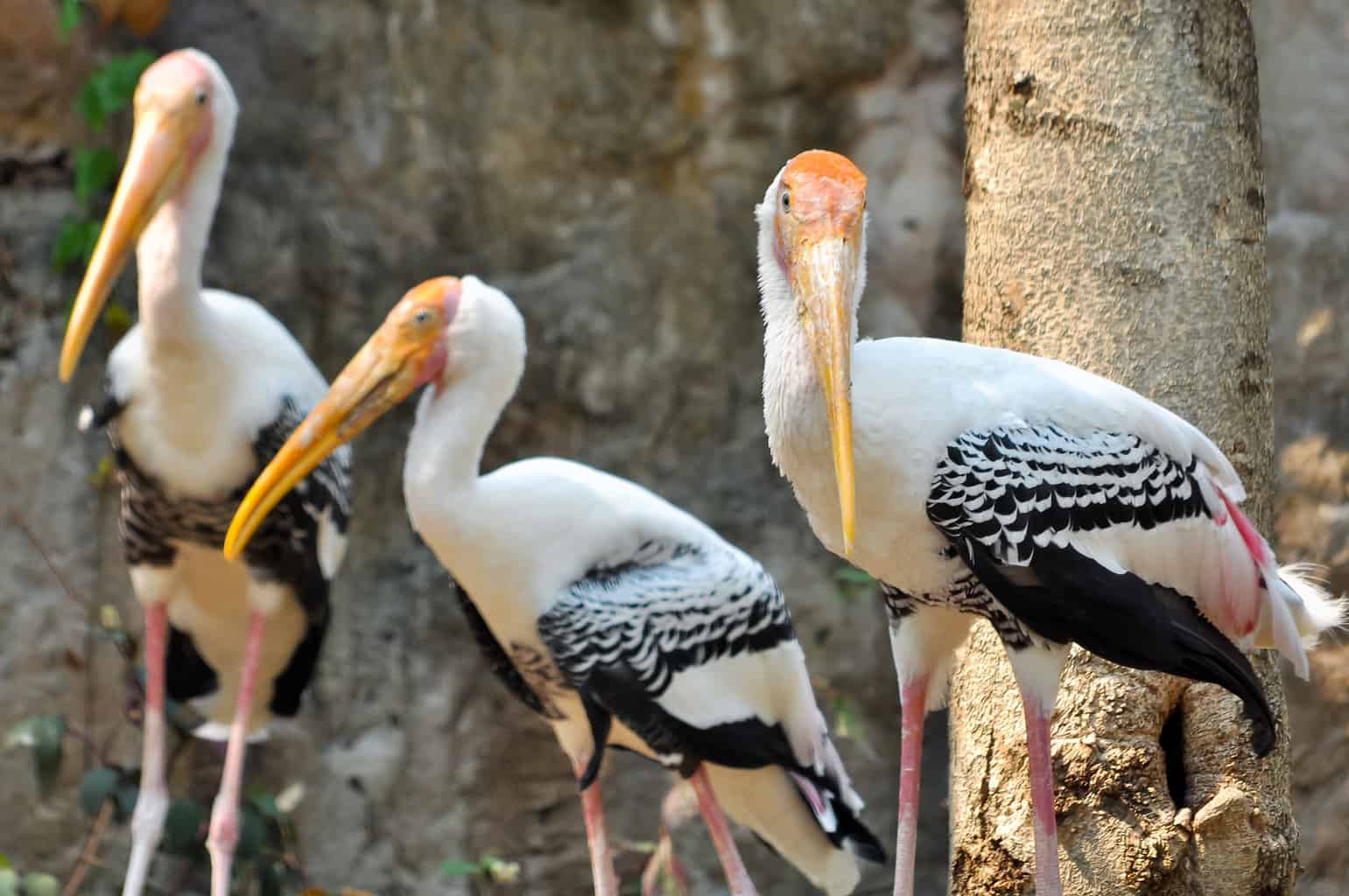
The painted stork is a large wading bird with a long neck, white feathers, and a red head. Due to its distinctive appearance, the painted stork is one of Asia’s most easily recognizable birds.
It is found in wetlands across much of the continent, from the Indian subcontinent to China. The bird gets its name from the red and yellow patches of color on its wings.
The painting on its wings is thought to be used for identification and communication between individual birds.
The painted stork is a highly social bird, living in large colonies. These colonies can number thousands of birds and are often located near human settlements.
The stork is an important part of the ecosystem, as it helps to control the population of small animals such as snakes, fish, rodents, and insects.
Scarlet Ibis
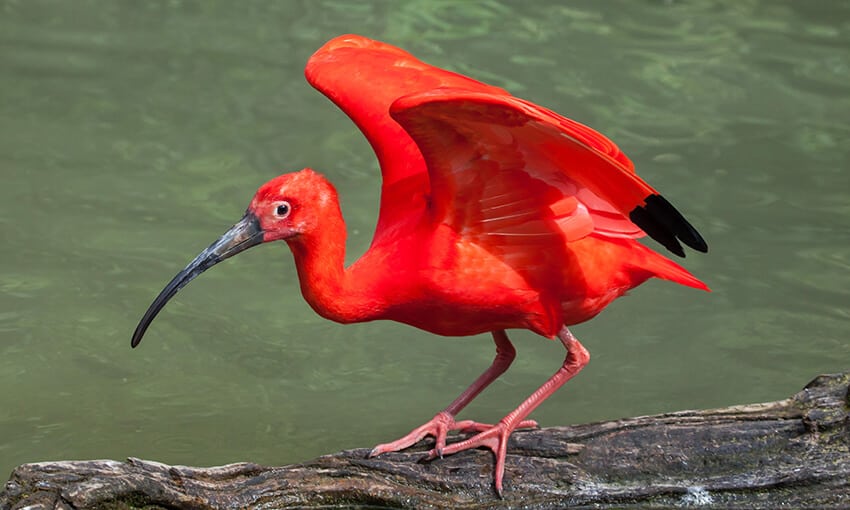
The scarlet ibis is a beautiful bird closely related to the flamingo. Both birds have long, elegant necks and are covered in beautiful feathers.
However, there are some significant differences between the two birds. The scarlet ibis is smaller than the flamingo, and its feathers are a deep red color.
In contrast, the flamingo has longer legs, and its feathers are pink or pale orange. The two birds also live in different habitats.
Scarlet ibises can be found in marshes and swamps, while flamingos typically live in more arid environments such as deserts.
Despite these differences, the scarlet ibis and the flamingo are extraordinary creatures sure to captivate any onlooker.
Siberian Crane
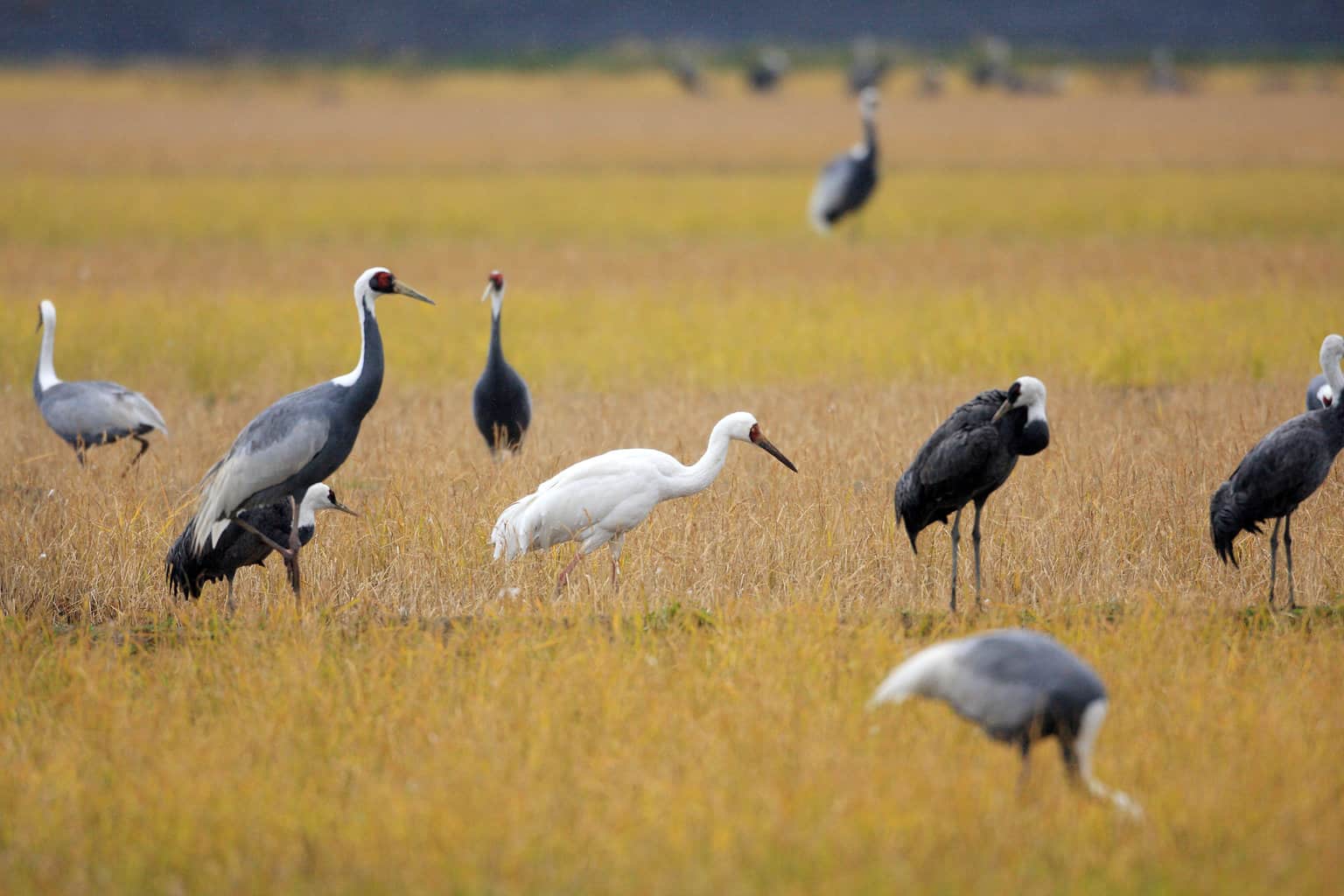
The Siberian Crane is a large bird known for its crimson plumage. Standing over five feet tall, these birds are among the tallest crane species.
Siberian Cranes are found in parts of Asia and Eastern Europe, where they congregate in open wetlands.
In winter, they migrate to southern regions in search of food. Diet consists mostly of plant life, but Siberian Cranes will also eat small insects and fish. Like other crane species, flamingos mate for life and often perform elaborate courtship rituals.
Both parents help to care for the young, which typically fledge at around six months old. Unfortunately, the Siberian Crane is now considered an endangered species due to habitat loss and degradation.
With only a few thousand individuals remaining in the wild, conservation efforts are essential to ensure the survival of this beautiful bird.
Capped Heron
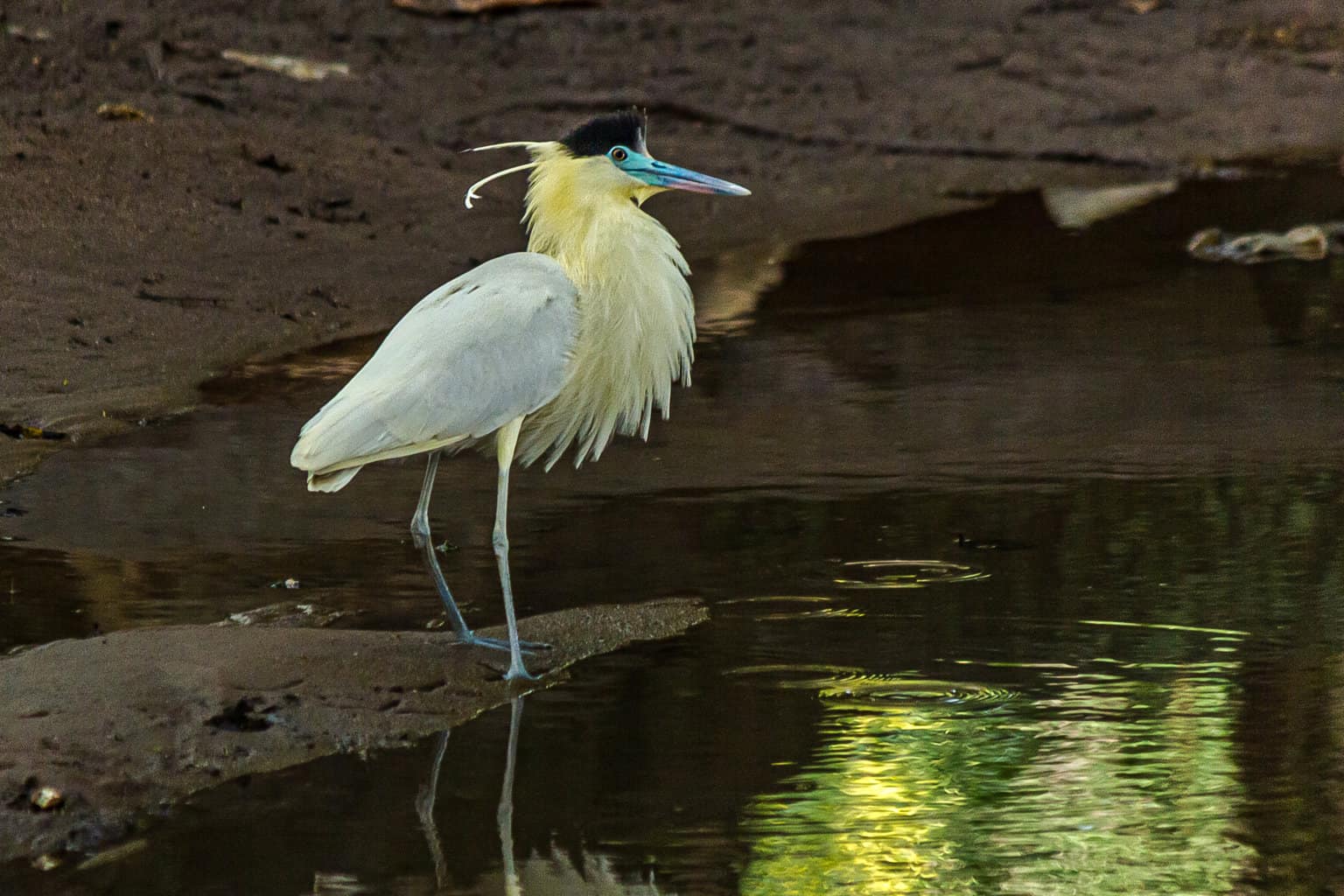
The Capped Heron is a striking bird found in the marshes and swamps of South America. Its most distinctive feature is its long, flamingo-like neck, which it uses to scan the water for prey.
The Capped Heron is an expert hunter, stalking its prey with silent steps before suddenly striking. Its diet consists mostly of fish but it will also eat reptiles, amphibians, and small mammals.
In addition to its long neck, the Capped Heron has a black cap on its head and a white tail. It is a relatively small heron, measuring only about two feet in length.
The Capped Heron is a fascinating bird that plays an important role in the ecosystem of its South American home.
White Stork
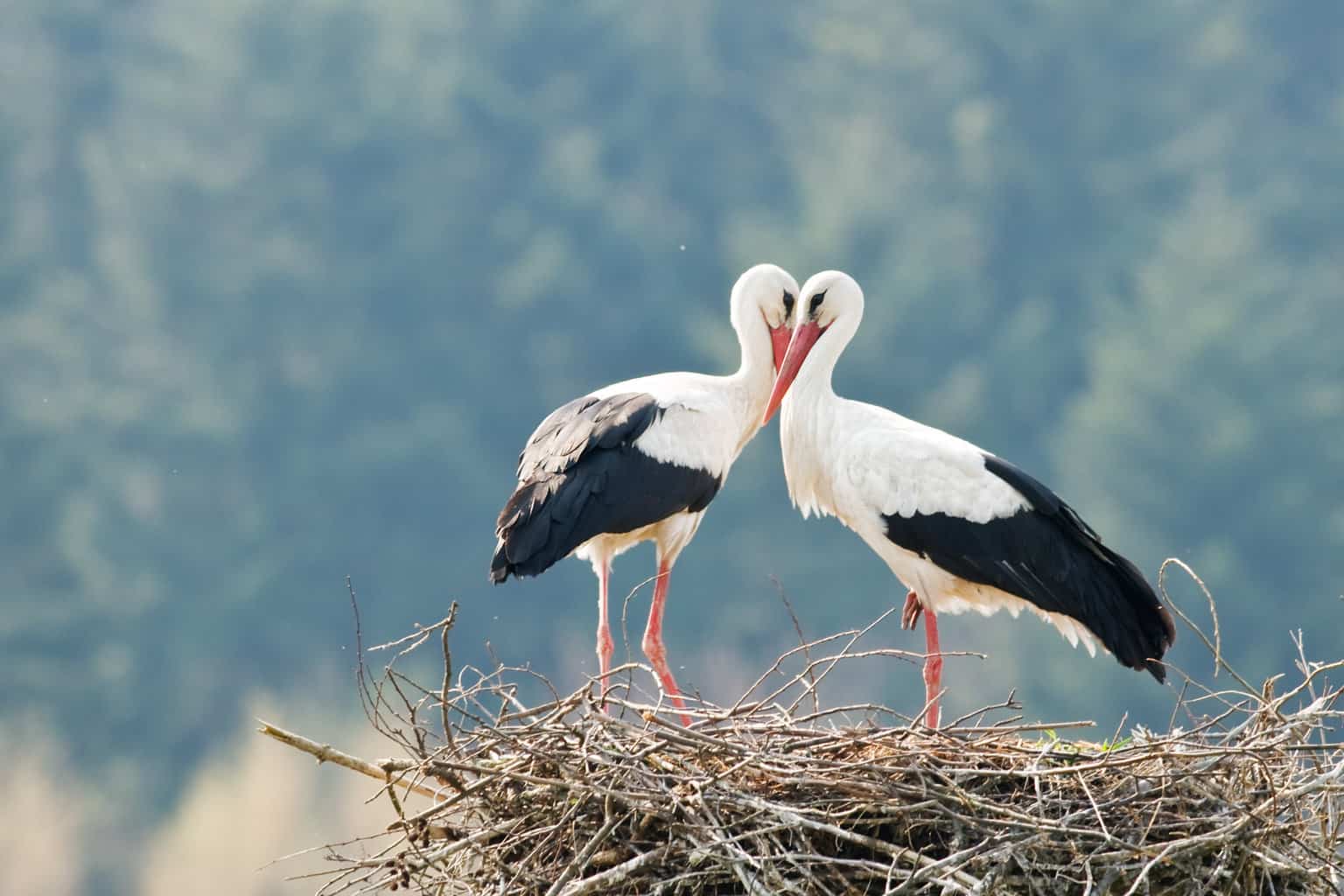
The white stork is a large white bird with a wingspan of up to 2.5 meters. The body is mostly white, with black flight feathers and a red beak.
The legs are also black. The white stork is found in Europe, Africa, and Asia. In Europe, it is mostly found in the southern and eastern parts of the continent.
In Africa, it is found in the north and northeast. In Asia, it is found in the southwest. The white stork is a known migratory bird and has been recorded flying between Europe and Africa.
It typically nests in trees but can also nest on buildings or cliffs. The diet of the white stork consists mainly of insects, reptiles, fish, and small mammals.
The white stork is considered a symbol of good luck in many cultures. In some parts of Europe, the stork is believed to bring newborn babies to homes.
This belief may have arisen due to the fact that the stork often nests on rooftops near homes. Another name for the white stork is flamingo because of its pinkish hue when seen from a distance.
Great Blue Heron
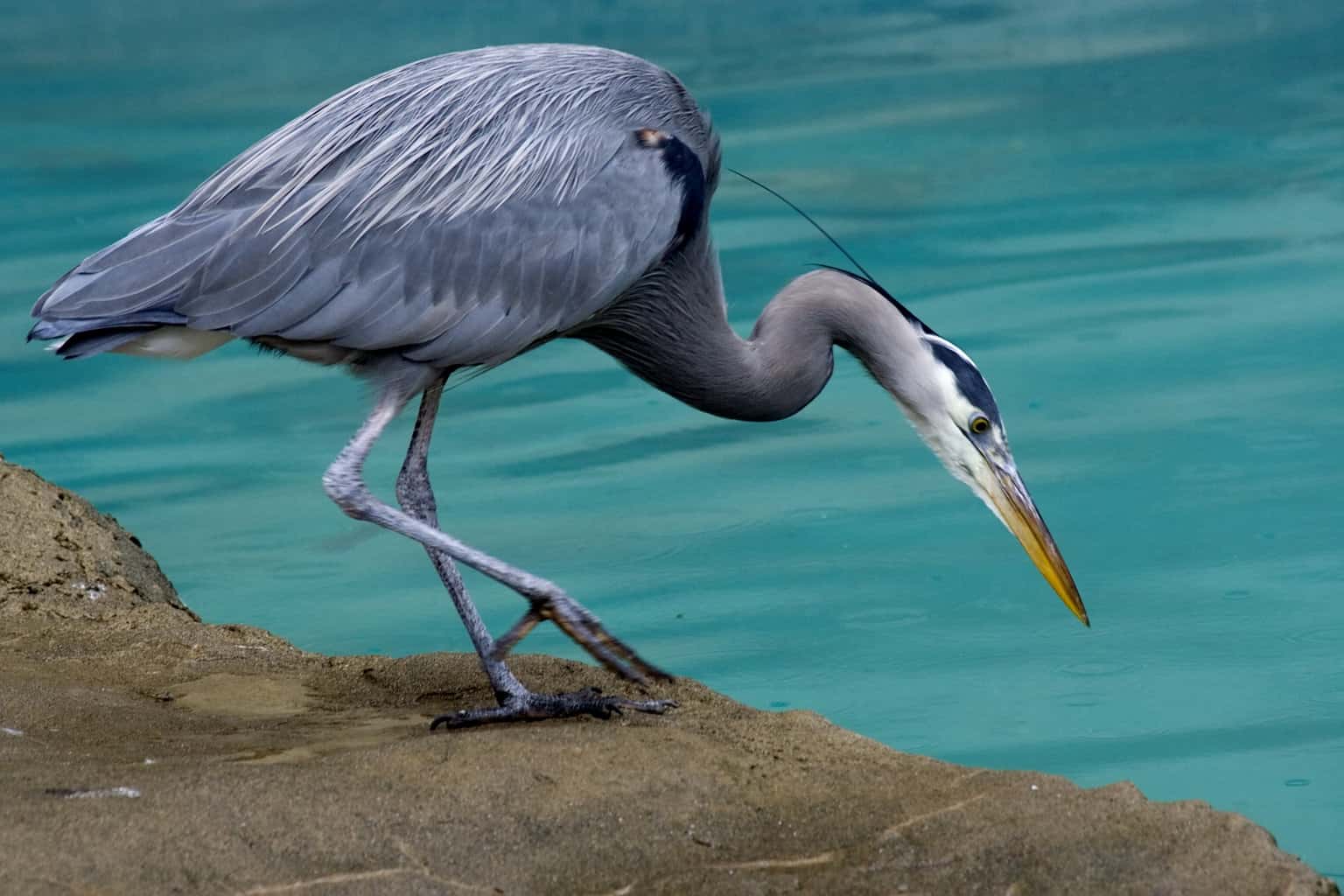
The Great Blue Heron is a large wading bird found throughout the North and the United States. They are easily recognizable by their long necks and legs, as well as their distinctive grey-blue plumage.
Great Blue Herons can grow to over four feet tall, with a wingspan of six feet or more. These majestic birds are often seen standing motionless at the edge of a pond or swamp, waiting to spear a fish with their sharp bills.
In addition to fish, Great Blue Herons will also eat amphibians, reptiles, and small mammals.
Great Blue Herons are not the only type of heron; other members of the heron family include the flamingo. However, the flamingo is more closely related to the stork than the heron.
Flamingos are easily distinguished by their pink feathers, long necks, and legs. Flamingos are found in Africa, South America, and parts of Asia.
Unlike Great Blue Herons, flamingos do not hunt for their food; they filter tiny organisms out of the water with their bills. Both Great Blue Herons and flamingos are impressive birds that are well worth watching.
Whooping Crane
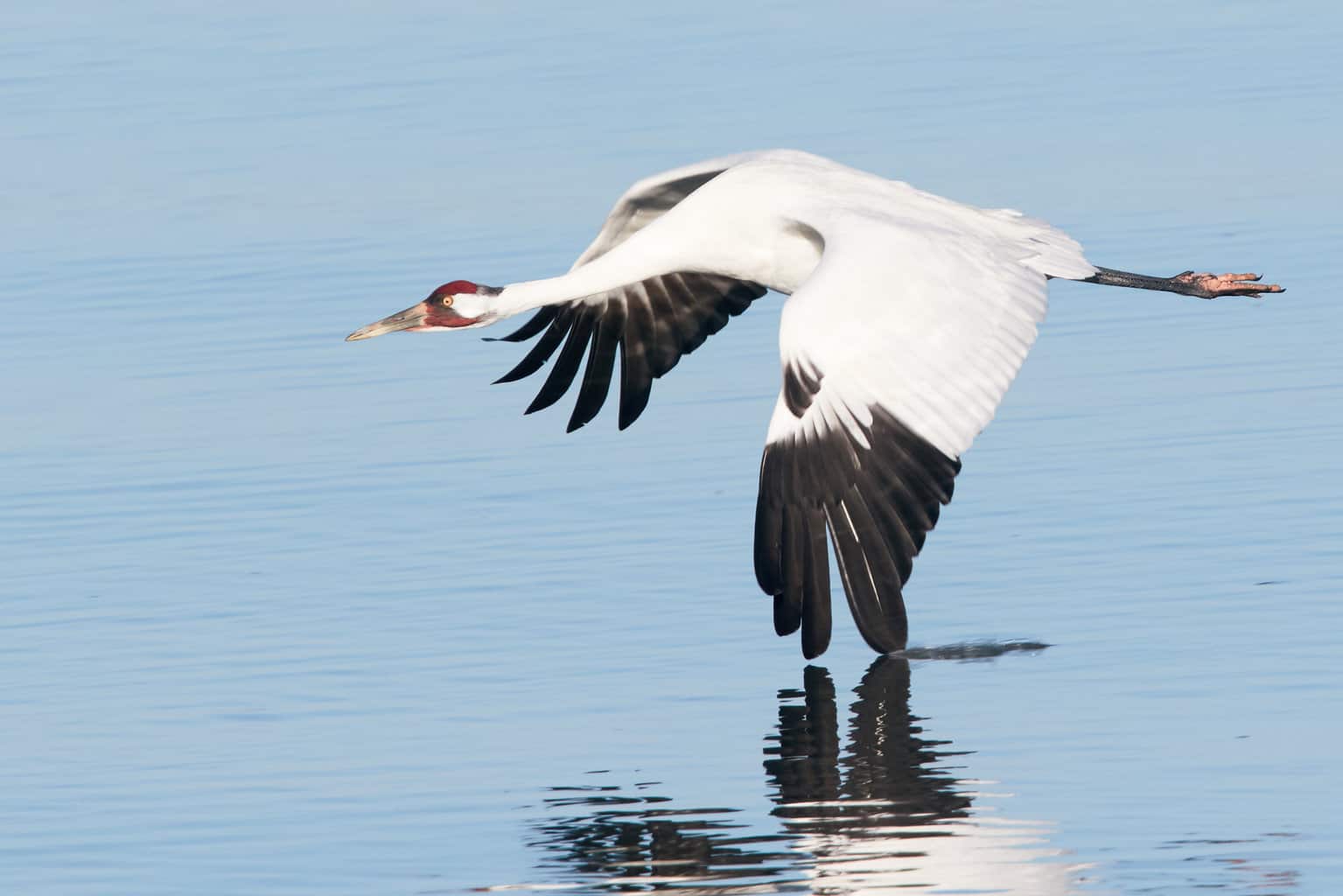
Did you know that the whooping crane is the tallest bird in North America? Standing five feet tall, these magnificent birds are easily distinguished by their white plumage and black wingtips.
Whooping cranes are also one of the longest-lived bird species of their family, with a lifespan of up to 25 years in the wild.
Whooping cranes were once on the brink of extinction, with only 21 individuals remaining in the wild by 1941.
Thanks to conservation efforts, their numbers have since rebounded to around 600. Today, you can see whooping cranes in wetland areas across the United States, where they feed on fish, insects, and small mammals.
Keep your eyes peeled next time you’re near freshwater wetlands – you might just spot a whooping crane!
Types of Flamingo
Flamingos are some of the most iconic birds in the world, known for their vibrant plumage and long necks.
They are also the national bird of the Bahamas! There are six different species of flamingo, all of which are native to tropical and subtropical regions.
- American (Caribbean) Flamingo – the largest of the six species, and its feathers range from deep pink to salmon-colored.
- Andean Flamingo – found in the highlands of South America and is distinguished by its orange-toned plumage.
- Chilean Flamingo – the smallest of the six species, and its feathers have a pale pink hue.
- Greater Flamingo – the most widespread of the six species, and can be found across Africa, Asia, and Europe.
- Lesser Flamingo – native to sub-Saharan Africa and has a pinkish-white plumage.
- Puna (James’s) Flamingo – found in the highlands of Bolivia, Chile, and Peru and is characterized by its bright red feathers.
While all flamingos are federally protected under the Migratory Bird Treaty Act, their conservation status varies. For instance, the greater flamingo is listed as the least concern, while the Chilean flamingo is considered endangered.
Despite this variation, flamingos continue to captivate the imagination of people across the globe. Whether standing on one leg or gathering in huge flocks, these birds always seem to bring a touch of magic to any setting.
Types of Pink Birds
Pink is certainly a unique color for birds. In the United States, only a handful of bird species boast pink plumage.
One of the most well-known is the flamingo, which is actually native to Africa, South America, and parts of Asia. As mentioned previously, there are six different species of flamingo.
But pink birds aren’t just limited to the flamingo family; there are also many species of parrot that are pink or have pink plumage. The most well-known example is the cockatoo, native to Australia and New Guinea.
Finally, there are a number of tropical birds with bright pink plumage, including toucans, hummingbirds, and sunbirds.
So if you’re looking for something a little different – something that’s both pretty and unique – then take a closer look at some of these amazing pink birds!
Final Thoughts
There you have it – 10 birds that look like flamingos! While some of these birds are actually closely related to flamingos, others are only similar in appearance. But one thing is for sure: all these birds are worth checking out.
So next time you’re at the zoo or the local park, keep your eyes peeled for these flamingo look-alikes. And who knows? Maybe you’ll even spot a real flamingo!

